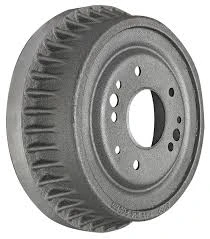
-
 Afrikaans
Afrikaans -
 Albanian
Albanian -
 Amharic
Amharic -
 Arabic
Arabic -
 Armenian
Armenian -
 Azerbaijani
Azerbaijani -
 Basque
Basque -
 Belarusian
Belarusian -
 Bengali
Bengali -
 Bosnian
Bosnian -
 Bulgarian
Bulgarian -
 Catalan
Catalan -
 Cebuano
Cebuano -
 Corsican
Corsican -
 Croatian
Croatian -
 Czech
Czech -
 Danish
Danish -
 Dutch
Dutch -
 English
English -
 Esperanto
Esperanto -
 Estonian
Estonian -
 Finnish
Finnish -
 French
French -
 Frisian
Frisian -
 Galician
Galician -
 Georgian
Georgian -
 German
German -
 Greek
Greek -
 Gujarati
Gujarati -
 Haitian Creole
Haitian Creole -
 hausa
hausa -
 hawaiian
hawaiian -
 Hebrew
Hebrew -
 Hindi
Hindi -
 Miao
Miao -
 Hungarian
Hungarian -
 Icelandic
Icelandic -
 igbo
igbo -
 Indonesian
Indonesian -
 irish
irish -
 Italian
Italian -
 Japanese
Japanese -
 Javanese
Javanese -
 Kannada
Kannada -
 kazakh
kazakh -
 Khmer
Khmer -
 Rwandese
Rwandese -
 Korean
Korean -
 Kurdish
Kurdish -
 Kyrgyz
Kyrgyz -
 Lao
Lao -
 Latin
Latin -
 Latvian
Latvian -
 Lithuanian
Lithuanian -
 Luxembourgish
Luxembourgish -
 Macedonian
Macedonian -
 Malgashi
Malgashi -
 Malay
Malay -
 Malayalam
Malayalam -
 Maltese
Maltese -
 Maori
Maori -
 Marathi
Marathi -
 Mongolian
Mongolian -
 Myanmar
Myanmar -
 Nepali
Nepali -
 Norwegian
Norwegian -
 Norwegian
Norwegian -
 Occitan
Occitan -
 Pashto
Pashto -
 Persian
Persian -
 Polish
Polish -
 Portuguese
Portuguese -
 Punjabi
Punjabi -
 Romanian
Romanian -
 Russian
Russian -
 Samoan
Samoan -
 Scottish Gaelic
Scottish Gaelic -
 Serbian
Serbian -
 Sesotho
Sesotho -
 Shona
Shona -
 Sindhi
Sindhi -
 Sinhala
Sinhala -
 Slovak
Slovak -
 Slovenian
Slovenian -
 Somali
Somali -
 Spanish
Spanish -
 Sundanese
Sundanese -
 Swahili
Swahili -
 Swedish
Swedish -
 Tagalog
Tagalog -
 Tajik
Tajik -
 Tamil
Tamil -
 Tatar
Tatar -
 Telugu
Telugu -
 Thai
Thai -
 Turkish
Turkish -
 Turkmen
Turkmen -
 Ukrainian
Ukrainian -
 Urdu
Urdu -
 Uighur
Uighur -
 Uzbek
Uzbek -
 Vietnamese
Vietnamese -
 Welsh
Welsh -
 Bantu
Bantu -
 Yiddish
Yiddish -
 Yoruba
Yoruba -
 Zulu
Zulu
Feb . 11, 2025 12:21
Back to list
drum brake parts breakdown
A thorough understanding of the drum brake system and its components can provide essential insights for both vehicle owners and automotive professionals, ensuring longevity and optimum performance of these systems. Drum brakes have been a staple in the automotive world for decades, primarily known for their durability and cost-effectiveness. An exploration of their parts breakdown is essential, both to enhance maintenance practices and to grasp their technical nuances.
Additionally, the adjuster mechanism serves to keep the brake shoes at an optimal distance from the drum, automatically adjusting itself to compensate for shoe wear to ensure consistent pedal height and predictable braking. Manual adjustments may be necessary in older vehicles or where automatic adjusters have failed. Proficiency in drum brake systems fosters a sense of authority and reliability, providing vehicle owners with confidence in their braking systems. Furthermore, routine inspections and servicing by a certified professional can preemptively address wear-and-tear issues, ensuring a high level of trustworthiness and expertise is maintained within the service industry. Incorporating modern technologies and practices, such as the use of advanced diagnostic tools to pre-emptively identify potential failures or the application of higher-grade materials for enhanced durability, can further extend the lifespan of drum brake systems. Manufacturers constantly improve drum brake components by experimenting with new friction materials that offer better performance, longer life and reduced noise, contributing greatly to the expertise within the field. Experience also plays an irreplaceable role when dealing with drum brake systems. Mechanics with substantial experience will often notice subtle symptoms of wear that may not be apparent to the untrained eye. Such professional acumen ensures safety and reliability, granting vehicle users peace of mind. To bolster trustworthiness and performance further, engaging with community forums and reading firsthand reviews from other vehicle owners can offer nuanced insights and personal experiences that shine a light on common issues, ensuring those concerns are directly addressed. This communal knowledge contributes to a broader understanding and adds value by equipping individuals with practical knowledge and preventative maintenance tips. By focusing on a comprehensive understanding of drum brake components, their functionality, and the importance of regular maintenance, drivers can enhance their vehicle's safety and extend its operable lifespan. Staying abreast of improvements and maintenance techniques not only fortifies the braking system's reliability but also embodies an informed buyer, benefiting consumers and professionals alike within the automotive domain.


Additionally, the adjuster mechanism serves to keep the brake shoes at an optimal distance from the drum, automatically adjusting itself to compensate for shoe wear to ensure consistent pedal height and predictable braking. Manual adjustments may be necessary in older vehicles or where automatic adjusters have failed. Proficiency in drum brake systems fosters a sense of authority and reliability, providing vehicle owners with confidence in their braking systems. Furthermore, routine inspections and servicing by a certified professional can preemptively address wear-and-tear issues, ensuring a high level of trustworthiness and expertise is maintained within the service industry. Incorporating modern technologies and practices, such as the use of advanced diagnostic tools to pre-emptively identify potential failures or the application of higher-grade materials for enhanced durability, can further extend the lifespan of drum brake systems. Manufacturers constantly improve drum brake components by experimenting with new friction materials that offer better performance, longer life and reduced noise, contributing greatly to the expertise within the field. Experience also plays an irreplaceable role when dealing with drum brake systems. Mechanics with substantial experience will often notice subtle symptoms of wear that may not be apparent to the untrained eye. Such professional acumen ensures safety and reliability, granting vehicle users peace of mind. To bolster trustworthiness and performance further, engaging with community forums and reading firsthand reviews from other vehicle owners can offer nuanced insights and personal experiences that shine a light on common issues, ensuring those concerns are directly addressed. This communal knowledge contributes to a broader understanding and adds value by equipping individuals with practical knowledge and preventative maintenance tips. By focusing on a comprehensive understanding of drum brake components, their functionality, and the importance of regular maintenance, drivers can enhance their vehicle's safety and extend its operable lifespan. Staying abreast of improvements and maintenance techniques not only fortifies the braking system's reliability but also embodies an informed buyer, benefiting consumers and professionals alike within the automotive domain.
Prev:
Latest news
-
Rear Drum Brakes Maintenance TipsNewsAug.04,2025
-
Key Components Affecting Brake Drum FunctionNewsAug.04,2025
-
Important Inspection for Truck Drum BrakeNewsAug.04,2025
-
How to Prepare for Changing Rear Drum BrakesNewsAug.04,2025
-
Essential Tools for Cleaning Drum Brakes ProperlyNewsAug.04,2025
-
Brake Drum Function GuideNewsAug.04,2025
-
Safety Features of Red Brake DrumsNewsAug.01,2025
